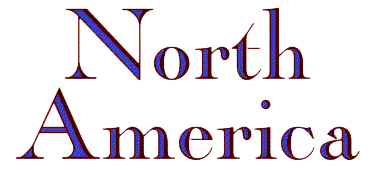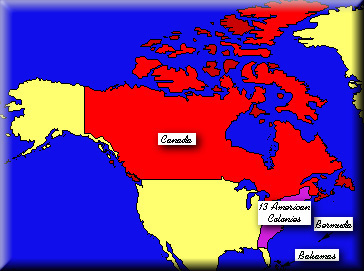|
|

The North American colonies are often regarded as a separate entity from the rest of the British Empire. It is often referred to as the First British Empire and is treated distinctly from the rest of the Imperial experience. Having said that, Canada was to play a major role in both of those imperial endeavours.
The 13 American colonies attracted religious emigrees, farmers and merchants from the British Isles. They would be augmented by Europeans and would also start the importation of slaves from Africa. Together, these colonists would build one of the most commercially successful realms in the British Empire. However, their commercial success and increasing self-sufficiency would also provide the roots of one of the most painful Imperial episodes: The American War of Independence.
The War of Independence was a complicated affair caused by the interests of the colonisers being pitted against the interests of the Imperial government; generally, over land and money. A long, drawn-out campaign, with French and Spanish interventions, saw the eventual humiliation of the Imperial government as it was forced to relinquish control over these colonies. The financial and diplomatic costs of this disaster would curb any British interest for Imperial endeavours for years to come.
The coast of Canada was initially colonised in much the same way as the 13 American colonies, but with the added complication of the presence of the French. The War of Independence shaped Canada in that it acted as a safe haven for loyalists fleeing from the rest of the Americas. This massive influx of British subjects tilted the delicate balance with the French and helped to turn Canada into a most loyal colony.

|
Armed Forces | Art and Culture | Articles | Biographies | Colonies | Discussion | Glossary | Home | Library | Links | Map Room | Sources and Media | Science and Technology | Search | Student Zone | Timelines | TV & Film | Wargames